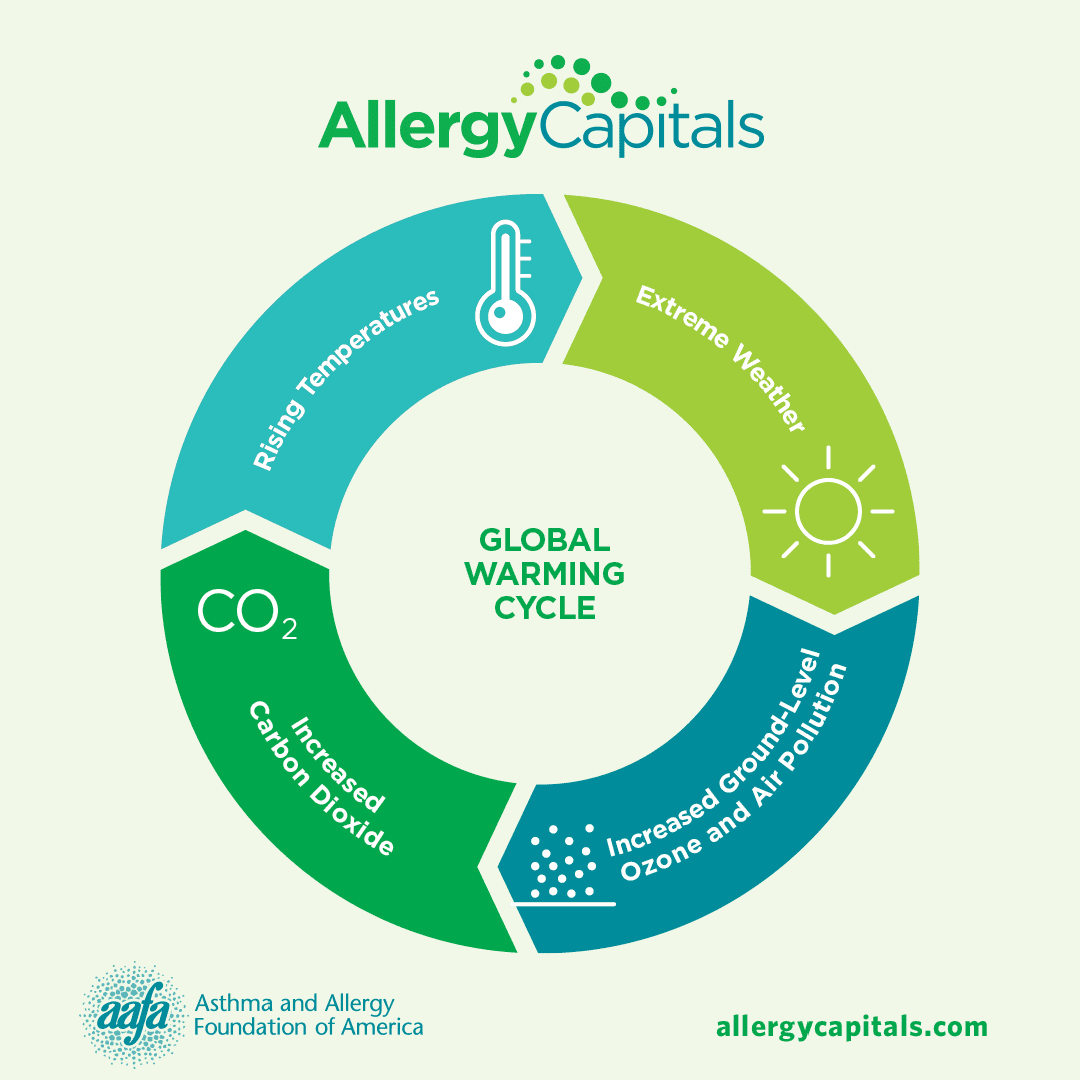Climate change is a major threat to public health.1 While every person's health is at risk, some groups are at an even greater risk. These groups include people with chronic diseases, such as asthma and allergies. Communities of color, people in low-income communities, senior adults, people who are pregnant, and children are also at greater risk.
In the Asthma and Allergy Foundation of America’s (AAFA) 2022 Allergy Capitals™ report, we highlight some of the ways climate change is affecting seasonal allergies.
Climate change creates a cycle. Global temperatures go up, making extreme weather events worse. Weather changes can lead to stagnant air flow – meaning there is a lack of air flow. When the air doesn’t move, this increases ground-level ozone, a major part of urban smog.
Smog and air pollution increase carbon dioxide (CO2). More CO2 then causes temperatures to go up. And the cycle restarts.

How does this relate to you and your seasonal allergies? Warmer temperatures and CO2 give plants longer growing seasons. This changes their flowering time and gives them the chance to create more pollen for a longer period of time.
The impact of climate change can be even stronger in urban areas. Warmer temperatures and extreme heat waves are worse because of an effect called an “urban heat island” (UHI). A UHI has higher temperatures than its surrounding areas. This is caused by more buildings, roads, population, and fewer green spaces.

Extreme heat made worse by UHIs can increase air pollution and allergic sensitivity. Climate change will make these UHIs worse. Black and Hispanic Americans − who already have higher rates of asthma and allergies − will be affected the most by worsening UHIs due to a long history of discrimination in U.S. housing policies.
Millions of people already have seasonal allergic rhinitis, and pollen allergies are a major cause. If climate change gets worse, pollen counts and air pollution will also get worse. This growing cycle of climate change is a dangerous one that must be stopped.
How Can I Learn More About the Report?
The Allergy Capitals™ ranking is an annual research and education project from AAFA. We release the report to help people recognize, prevent, and safely treat allergy symptoms. Through this ranking, AAFA raises awareness about the impact of spring and fall seasonal allergies. It provides helpful information that can improve the quality of life for people living with seasonal allergies.
Visit allergycapitals.com to see the full list and to learn more about allergy diagnosis, prevention, and treatment.
Join our online community where you can get support for asthma and allergies and stay up to date on news and research.
References
1. Wuebbles, D.J., Fahey, D.W., Hibbard, K.A., DeAngelo, B., Doherty, S., Hayhoe, K., Horton, R., Kossin, J.P., Taylor, P.C., Waple, A.M., & Weaver, C.P. (2018). Fourth National Climate Assessment: Climate science special report. U.S. Global Change Research Program. https://www.globalchange.gov/nca4

Comments (1)